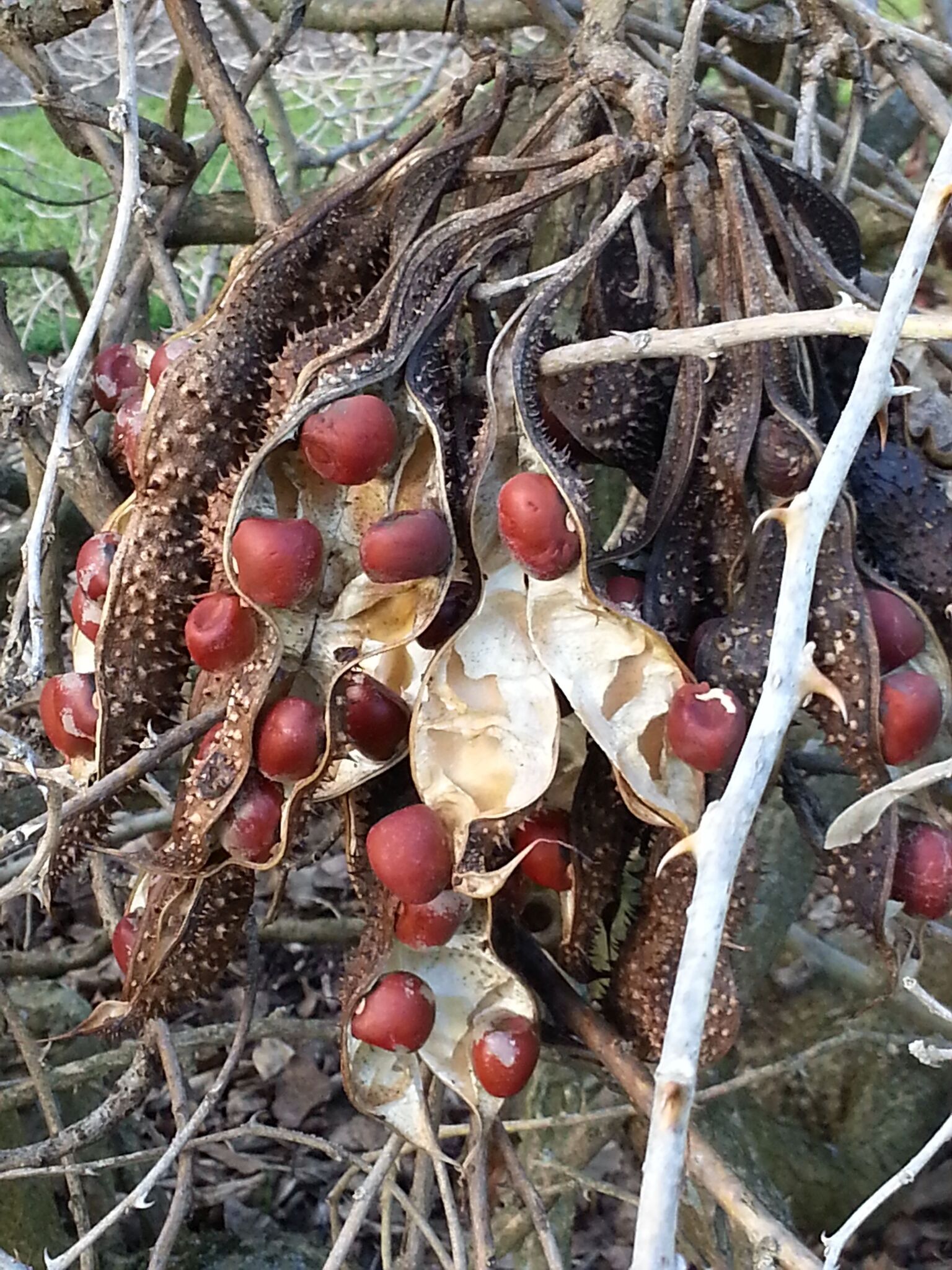
Greek erythros — red, referring to the spectacular red flowers.
Trees, shrubs or rarely herbs, often with prickly stems. Leaves deciduous, consisting of 3 leaflets, the terminal one largest; stipules small; stipels gland-like and ant-attracting. Flowers mostly red or orange, either axillary without leaves, or terminal with leaves at the base. Sepals on a cylinder or tube, split, simple or 5-toothed, with the teeth shorter than the tube. Stamens 10, 9 fused together, 1 separate from the others or only fused at the base. Fruit pod variously constricted between the seeds, splitting along the upper surface and sometimes prickly.
Grown for the extremely attractive, brightly coloured flower clusters.
E. vespertilio Benth., Bat Wing Coral Tree (Bean Tree,Yulbah), from Australia has remarkable leaves with 2 divergent linear-oblong lobes; it is occasionally grown in warmer districts.
108 species, tropical and subtropical (4 species native to C and N Australia).
Seed or cuttings.
Leaves of Asian species are used in curry. The Hawaian E. sandwicensis Deg. has extremely soft wood used for outriggers of traditional canoes, fishnet floats, and even the original-style surfboards; the seeds are used as beads.
Mostly trees, with leaves of 3 pinnately arranged leaflets, often with glandular stipels.
McClintock (1953, 1982), Krukoff & Barneby (1974), Neill (1988), Chandler (1990).
Source: (2002). Fabaceae. In: . Horticultural Flora of South-eastern Australia. Volume 3. Flowering plants. Dicotyledons. Part 2. The identification of garden and cultivated plants. University of New South Wales Press.
